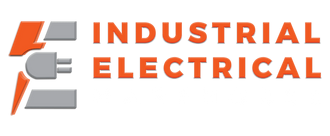In today’s fast-paced industrial environments, precision, speed, and reliability are non-negotiable. Among the many components that enable such high-performance operations, photoelectric sensors play a critical role in automation, quality control, and safety. Whether you're dealing with packaging lines, conveyor systems, or factory automation, knowing the right photoelectric sensor types and their applications can significantly improve efficiency and minimize downtime.
This guide dives deep into the various photoelectric sensor types, particularly diffuse, retroreflective, and through-beam sensors, offering insights into best practices for selecting the appropriate range and beam type.
What is a Photoelectric Sensor?
A photoelectric sensor is a device that detects the presence or absence of an object, or changes in surface conditions, by using a light transmitter (often infrared) and a photoelectric receiver. These sensors convert light energy into an electrical signal to trigger a response in industrial systems. Their popularity stems from their non-contact nature, high sensitivity, long detection range, and ability to work in a variety of environmental conditions.
The different photoelectric sensor types are primarily categorized based on their method of detection and configuration: diffuse, retroreflective, and through-beam.
Photoelectric Sensor Types Explained
Diffuse Photoelectric Sensors
Diffuse sensors operate by emitting light directly onto the object to be detected. The object then reflects light back to the sensor's receiver. These sensors are best suited for short-range detection and environments where object contrast is high. Their simplicity makes them easy to install and cost-effective.
Advantages:
- Simple wiring and setup
- No need for reflectors or receivers
- Cost-effective for general-purpose use
Limitations:
- Shorter sensing range (usually up to 1 meter)
- Affected by color, texture, and reflectivity of the object
Retroreflective Photoelectric Sensors
Retroreflective sensors emit a beam toward a reflector placed opposite the sensor. The presence of an object interrupts the beam, triggering the sensor. This configuration is ideal for medium-range applications and offers better performance with transparent or semi-transparent objects (when using polarized filters).
Advantages:
- Longer sensing distance than diffuse
- More reliable with consistent object reflectivity
- Easy alignment with built-in reflector
Limitations:
- Requires a reflector
- Can be triggered falsely by shiny or reflective objects
Through-Beam Photoelectric Sensors
Through-beam sensors consist of two separate components: a transmitter and a receiver. The beam travels from the transmitter to the receiver, and when an object blocks the beam, the sensor detects its presence. This type is the most reliable and offers the longest range and highest precision.
Advantages:
- Longest sensing distance (can exceed 10 meters)
- Highest detection accuracy
- Minimal influence from ambient light or object reflectivity
Limitations:
- Requires two separate components
- More complex installation and alignment
- Higher cost compared to other types
Best Practices for Choosing the Right Photoelectric Sensor Range
Selecting the appropriate sensor range is essential for effective performance. Here are some best practices:
- Evaluate the Environment: Consider temperature, humidity, dust, and ambient light. For example, dusty environments may degrade the performance of diffuse sensors.
- Measure Distance Accurately: Choose a sensor with a detection range slightly greater than your application requirements to ensure margin for alignment errors and environmental factors.
- Material and Reflectivity of Target: Shiny or dark objects can affect sensing accuracy. Through-beam sensors offer better reliability in such cases.
- Size and Speed of Target: Fast-moving or small objects may require high-speed response time and precise alignment.
- Installation Constraints: Evaluate space limitations. For tight spaces, retroreflective or diffuse sensors are better suited due to their compact nature.
- Maintenance Needs: Through-beam systems might require more regular maintenance and alignment checks.
Application Comparison of Photoelectric Sensor Types
|
Application |
Recommended Sensor Type |
Reason |
|
Conveyor Object Detection |
Retroreflective |
Reliable for varying object colors and sizes |
|
Bottle Filling Line |
Through-Beam |
High speed and accuracy for small, transparent bottles |
|
Packaging Line (Boxes) |
Diffuse |
Easy setup and short-range suitability |
|
Transparent Plastic Detection |
Retroreflective (Polar) |
Reduces false positives from shiny materials |
|
Presence Detection in Sorting |
Through-Beam |
Long-range and precise detection even at high speeds |
Troubleshooting Tips for Photoelectric Sensors
Understanding the common issues with each photoelectric sensor type can help in troubleshooting:
Diffuse Sensor Issues
- Inconsistent readings due to surface texture
- False detection caused by ambient light interference
Retroreflective Sensor Issues
- Misalignment of reflector
- Dust or smudges on reflector can disrupt performance
Through-Beam Sensor Issues
- Blockage in beam path
- Misalignment due to vibration or mechanical disturbance
Pro Tip: Periodically clean lenses and check alignment. Choose sensors with diagnostic LEDs or indicators for real-time status updates.
Future Trends in Photoelectric Sensor Technology
As automation becomes more intelligent and interconnected, photoelectric sensor technology is also evolving:
- Smart Sensors with IO-Link: Real-time diagnostics, adjustable parameters, and simplified integration with PLCs.
- Miniaturization: Compact sensors for space-constrained applications.
- Improved Resistance: Enhanced immunity to electromagnetic interference and environmental noise.
- AI and Predictive Maintenance: Sensors with built-in algorithms to predict failures.
These trends further diversify photoelectric sensor types, offering more tailored solutions for niche applications.
Conclusion: Choosing the Right Photoelectric Sensor Type
Understanding the key differences between diffuse, retroreflective, and through-beam photoelectric sensor types empowers engineers and facility managers to make informed decisions. Each sensor type offers unique strengths and trade-offs, and the best choice depends on application specifics like distance, environment, and object characteristics.
By following best practices and knowing the limitations and advantages of each beam type, your automation system can achieve enhanced reliability and performance.
Explore Related Product Collections
To find the right sensors for your next project, explore our dedicated sensor collections at Industrial Electrical Warehouse:
- Photoelectric Sensors Collection
- Proximity Sensors Collection
- Automation & Control Components
- Smart Sensor Accessories
Browse our top brands and configure your industrial setup with confidence!


